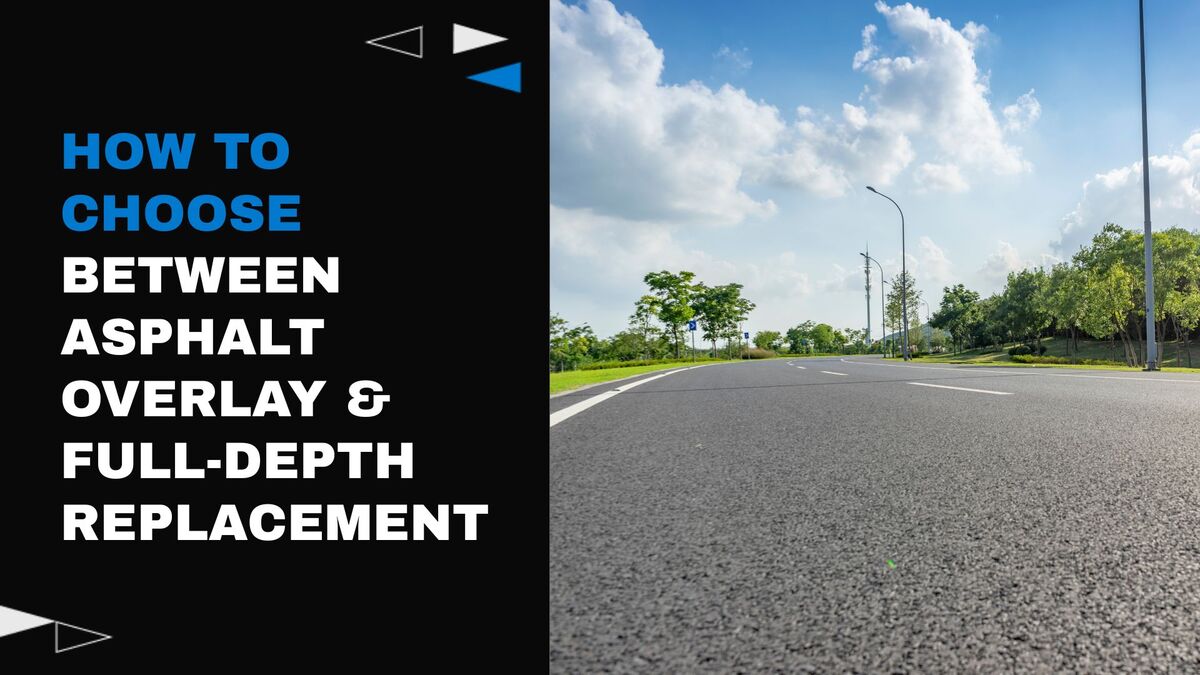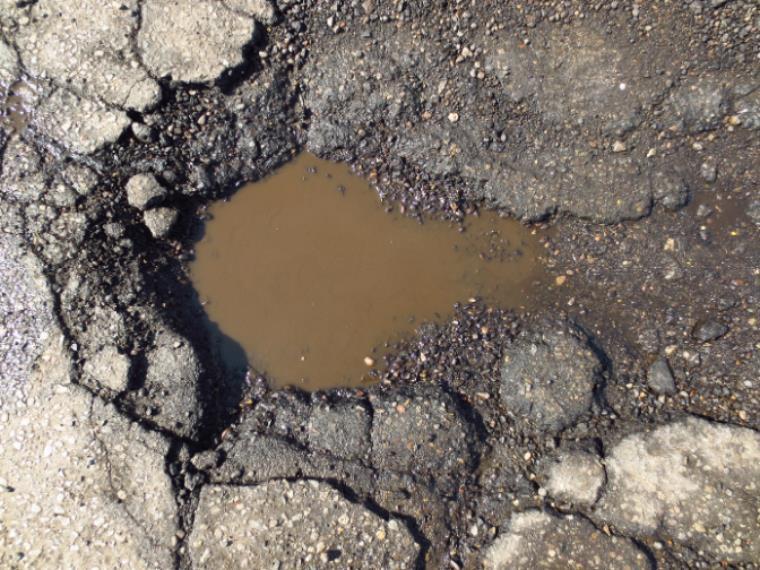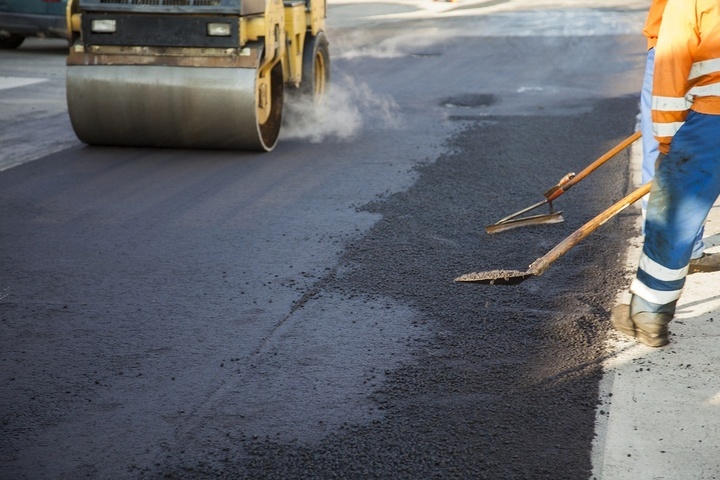How to Choose Between Asphalt Overlay and Full-Depth Replacement

Is your pavement showing signs of age, cracks spreading, surfaces fading, or repairs piling up faster than your budget can keep up? Deciding what to do next isn’t always straightforward.
Some areas may look salvageable, while others leave you wondering if it’s time to start over. Whether you’re weighing long-term durability against tight budgets, managing pressure to minimize disruptions, or juggling all three, the path forward isn’t always clear.
When it comes to restoring asphalt, the two main options, overlay or full-depth replacement, serve very different purposes. The challenge lies in knowing which one will truly solve the problem beneath the surface, not just temporarily cover it up. That’s where understanding the process, the conditions, and the end goals becomes essential.
In this article, we’ll walk through the real differences between these options, so you can make the right call for your pavement and your priorities.
What to Know About Asphalt Overlay vs. Full-Depth Replacement
When your pavement starts to show signs of wear, choosing the right fix isn’t just about appearances, it’s about understanding what’s happening below the surface. Both asphalt overlay and full-depth replacement have their place, but they serve different needs and conditions. Knowing what each process involves is the first step in making a responsible, informed decision.
What Is Asphalt Overlay?
Asphalt overlay involves applying a new layer of asphalt over existing pavement. This layer is typically 1.5 to 2 inches thick and is designed to restore the surface without addressing what lies beneath. It’s best suited for lots that are structurally sound but need a refresh due to minor surface damage.
What Is Full-Depth Replacement?
Full-depth replacement, on the other hand, removes the entire existing pavement and rebuilds it from the base up using new materials. This process is far more intensive, but it’s necessary when the structure itself is failing or the pavement has deteriorated beyond surface-level issues.
When Asphalt Overlay Makes the Most Sense
Once you understand the difference between the two approaches, the next question is when to use one over the other. Asphalt overlay can be an efficient, budget-friendly option, when the conditions are right.
Surface Damage Without Structural Failure
If your lot shows signs of wear like minor cracking, oxidation, or a slick surface with reduced traction, overlay may be a solid solution. The key is that there are no underlying base or subgrade problems. When the foundation is intact, resurfacing can breathe new life into the pavement without unnecessary reconstruction.
Budget-Conscious Repairs
Overlay is appealing for those trying to manage costs while maintaining usability. It’s less expensive upfront than full-depth replacement and can often be completed more quickly, which reduces disruption to your tenants, customers, or operations.
Routine Maintenance Planning
For properties with proactive maintenance plans, overlay is often part of a long-term strategy. When timed well, it can extend the lifespan of the pavement by eight to fifteen years, delaying the need for more extensive repairs.

3 Signs You May Need Full-Depth Replacement
While overlay has its advantages, it’s not always the right call. Some conditions indicate a deeper issue that can’t be solved by resurfacing.
1. Widespread Cracking and Potholes
If your lot is covered in alligator cracking or potholes that keep returning, these are signs of structural failure. When surface-level patching no longer holds, it may be time to rebuild the pavement entirely.
2. Drainage and Base Layer Failures
Pavement that shifts, sinks, or pools of water is often suffering from problems in the subgrade or base layers. These hidden issues can worsen over time if left unaddressed, making full-depth replacement the safer and more durable option.
3. Age and Heavy Traffic Loads
If the pavement is nearing the end of its natural life or handles heavy loads daily, like in shopping centers, warehouses, or industrial zones, replacement may offer the strength and longevity needed to avoid ongoing repairs.
Comparing Costs, Longevity, and Long-Term Value
Once you understand the physical conditions, it’s important to compare each option through a financial and strategic lens. Both methods carry their own cost and maintenance implications.
Cost Considerations
Asphalt overlay is typically 30 to 50 percent less expensive upfront than full-depth replacement. However, if the pavement has significant underlying issues, the cost savings may disappear due to repeated patching or premature failure. Full-depth replacement, while more expensive initially, can offer better long-term value for lots in poor condition.
Durability and Lifespan
Overlay can extend pavement life by eight to fifteen years with proper maintenance. In contrast, full-depth replacement offers a longer lifespan, typically twenty to thirty years, especially in areas with high usage or heavy loads.
Maintenance Requirements
Overlays often require more routine attention to address new cracking or wear. Full-depth replacement, once complete, tends to demand less upkeep and offers a more stable surface over time.

Make the Right Choice with Expert Evaluation
Even with all this information, it’s difficult to make the right call without a professional evaluation. What’s visible on the surface is only part of the story.
Importance of a Professional Assessment
A thorough assessment goes beyond what you can see. A qualified contractor will evaluate the site through core sampling, subgrade analysis, and drainage checks to ensure the correct course of action is recommended.
Trust a Contractor Who Considers Your Long-Term Needs
You need more than someone to perform the work; you need a partner who looks at the bigger picture. A responsible contractor will help you weigh current conditions, future plans, and overall costs to develop a strategy that protects your investment for years to come.
Plan with Confidence with Pinnacle Paving
Making the right decision for your pavement doesn’t have to feel like guesswork. When you understand the differences between asphalt overlay and full-depth replacement, you can weigh the options with clarity and purpose. At Pinnacle Paving, we offer insight based on real conditions, long-term needs, and your unique goals.
Our team is here to help you protect your investment, minimize disruption, and find a solution that fits your timeline and budget. If you're evaluating the next steps for your lot, trust a partner who brings experience, transparency, and practical guidance to every project.
Let’s take the next step together. Reach out to schedule a site evaluation today.

